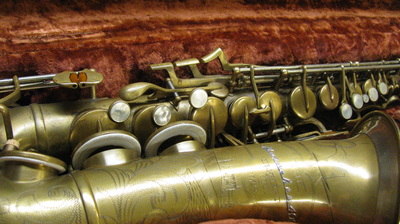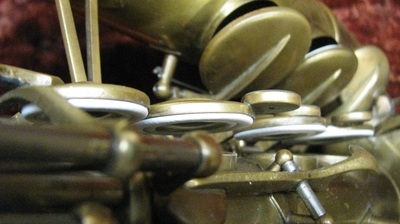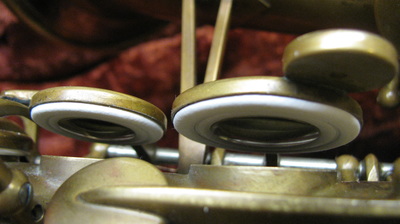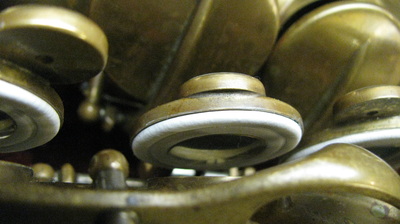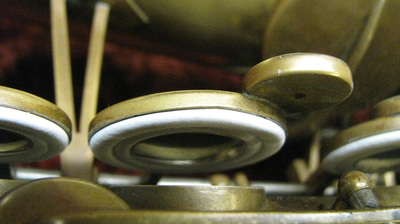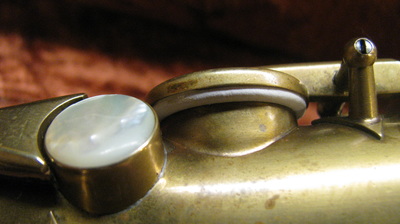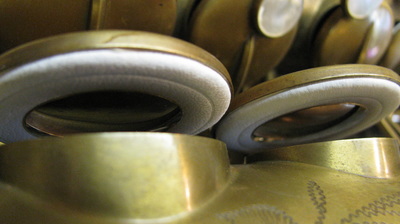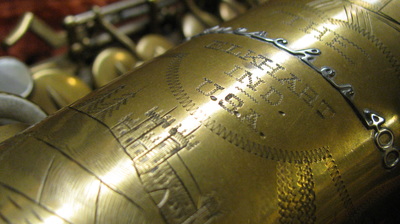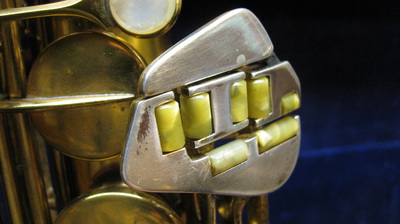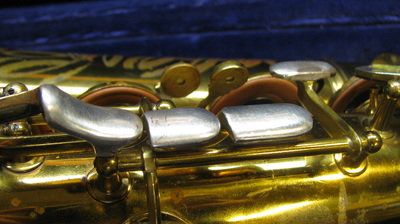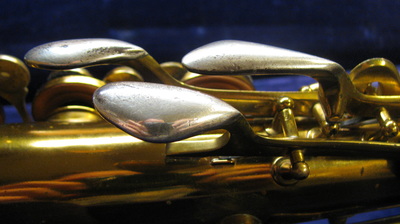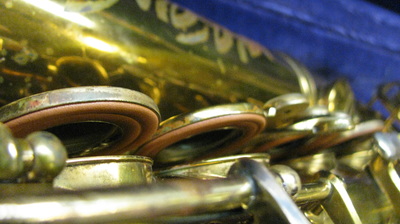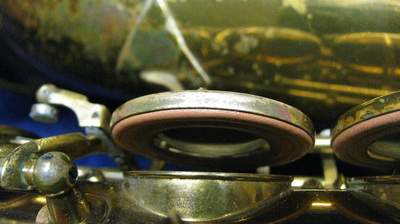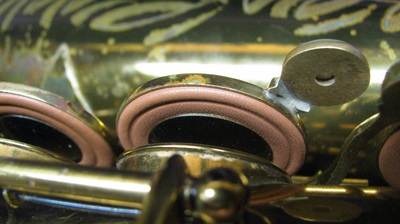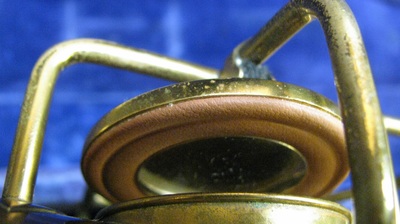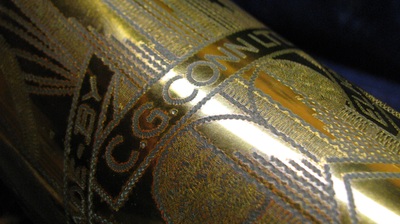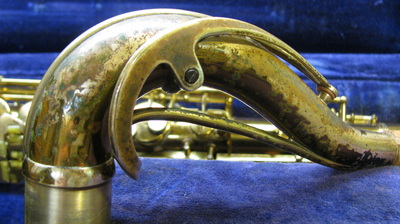The Death and the Life of a Horn
I overhauled this horn six years ago in 2008. At the time I was in the advanced stages of my apprenticeship, having recently left Ed Strege's Badger State Repair and working in a corporate repair shop.
My supervisor at the time was in the "Always Grind Out Buescher Snaps" camp, and had counseled me to persuade this customer to have that done to this horn. And I did. Therein lies the Death.
That was then. I never do it now, and wouldn't agree to if a customer asked, I'd tell them to have it done elsewhere.
The owner of this horn is clearly not losing sleep over it. He has continued to bring it back like clockwork once a year for a full service. Some where along the line he decided he wanted any new pads installed to be white. He's moving and this time around the whole lower stack, along with some other pads, had to be replaced.
I overhauled this horn six years ago in 2008. At the time I was in the advanced stages of my apprenticeship, having recently left Ed Strege's Badger State Repair and working in a corporate repair shop.
My supervisor at the time was in the "Always Grind Out Buescher Snaps" camp, and had counseled me to persuade this customer to have that done to this horn. And I did. Therein lies the Death.
That was then. I never do it now, and wouldn't agree to if a customer asked, I'd tell them to have it done elsewhere.
The owner of this horn is clearly not losing sleep over it. He has continued to bring it back like clockwork once a year for a full service. Some where along the line he decided he wanted any new pads installed to be white. He's moving and this time around the whole lower stack, along with some other pads, had to be replaced.
Removing Buescher snaps is unnecessary and ethically questionable, but once they're gone, finding, and then soldering in, replacement grommets is very expensive.
Now, playing this horn is as fun as the pictures make it look. It is arguably one of the most stylish horns I have ever seen. And no one, no one, will walk into a club, hear the horn player and say, "Oh man! Listen to that, that cat can play---wait. Oh, hell no. Someone removed the Snaps from that Buescher. God damnit, I'm outta here."
No one can hear the difference, and anyone that says they can is pretending. However, the sad part is the loss of historical integrity. And like I said, once they're gone, putting them back isn't very easy. The most valuable lessons are the tough ones. Every time I see this horn I learn it again.
But when I play this horn, it responds with so much color and power, I never stop to think about the snaps, I'm too busy enjoying the horn. And therein lies the Life.
Now, playing this horn is as fun as the pictures make it look. It is arguably one of the most stylish horns I have ever seen. And no one, no one, will walk into a club, hear the horn player and say, "Oh man! Listen to that, that cat can play---wait. Oh, hell no. Someone removed the Snaps from that Buescher. God damnit, I'm outta here."
No one can hear the difference, and anyone that says they can is pretending. However, the sad part is the loss of historical integrity. And like I said, once they're gone, putting them back isn't very easy. The most valuable lessons are the tough ones. Every time I see this horn I learn it again.
But when I play this horn, it responds with so much color and power, I never stop to think about the snaps, I'm too busy enjoying the horn. And therein lies the Life.
